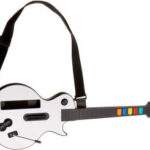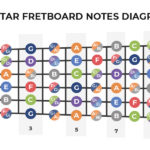The acoustic guitar possesses an inherent charm, a sonic signature that resonates deeply with listeners. Its warmth and organic tones are often sought after, even in electric music genres. Yet, the natural volume of an acoustic instrument can sometimes fall short, particularly in live performance settings or when recording with other instruments. This is where the best acoustic electric guitars step into the spotlight, offering the perfect blend of acoustic beauty and amplified power.
Whether you’re a seasoned performer gracing large stages or an aspiring musician playing in intimate venues, an acoustic electric guitar (often called an electro-acoustic) provides the versatility you need. It delivers authentic acoustic tones with the added benefit of amplification, ensuring your sound reaches every corner of the room.
The world of acoustic electrics is diverse, encompassing various body styles, tonewoods, and pickup technologies. From budget-friendly options to high-end professional instruments, the choices can be overwhelming. This guide is designed to navigate you through the best acoustic electric guitars available today, catering to all playing styles and budgets. We’ll explore top-performing models, discuss essential features, and answer frequently asked questions to help you make an informed decision.
Our Top Acoustic Electric Guitar Picks
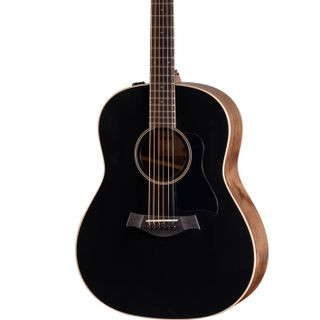 Taylor American Dream AD17EBest Overall Acoustic Electric Guitar
Taylor American Dream AD17EBest Overall Acoustic Electric Guitar
1. Taylor American Dream AD17E
For players seeking a premium, all-around acoustic electric, the Taylor American Dream AD17E stands out. Taylor guitars are celebrated for their articulate and pristine sound, and this model embodies that reputation. Its dreadnought body shape provides a robust, classic acoustic voice with a contemporary edge. The integrated ES-2 pickup system captures a remarkably natural and organic amplified tone, while Taylor’s innovative V-Class bracing enhances volume and sustain, making it a top contender for best acoustic electric guitar overall.
Read more about the Taylor American Dream AD17E
 Martin DJR-10EBest Value Acoustic Electric Guitar
Martin DJR-10EBest Value Acoustic Electric Guitar
2. Martin DJR-10E
The Martin DJR-10E expertly balances quality, playability, exceptional sound, and affordability, making it our best value pick. Crafted entirely from solid wood and equipped with a quality pickup system, this Martin guitar is available at an accessible price point. Its slightly smaller body size enhances comfort and portability, appealing to a wide range of players seeking a high-quality yet affordable acoustic electric guitar.
Explore the Martin DJR-10E in detail
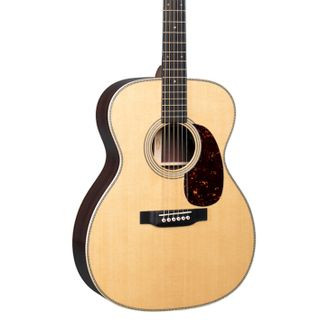 Martin 000-28EBest Acoustic Electric Guitar for Professionals
Martin 000-28EBest Acoustic Electric Guitar for Professionals
3. Martin 000-28E
The Martin 000-28E is a professional-grade instrument, perfect for discerning musicians. While Martin’s D-28 is iconic, the 000-28 offers superior comfort and intimacy due to its smaller body. This updated version is lighter and louder than traditional 000 models, featuring a titanium truss rod for enhanced strength and resonance. Its balanced tone and exceptional touch sensitivity make it a top choice for professional players seeking the best acoustic electric guitar for stage and studio.
Discover why the Martin 000-28E is best for pros
Best Overall Acoustic Electric Guitar
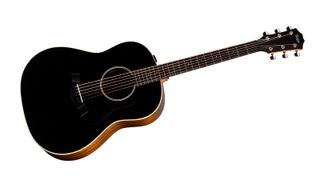 Taylor American Dream AD17E Blacktop acoustic electric guitar
Taylor American Dream AD17E Blacktop acoustic electric guitar
(Image credit: Taylor)
1. Taylor American Dream AD17E Blacktop
The Best Solid Wood Electro-Acoustic All-Rounder
Read our Expert Review of the Taylor American Dream AD17E
Specifications:
- Scale Length: 25.5”
- Top: Solid Sitka spruce
- Back and Sides: Solid ovangkol
- Neck: Mahogany
- Fingerboard: Eucalyptus
- Frets: 20
- Electronics: Taylor ES-2
- Finish: Matte black
- Bag Included: Aerocase
Reasons to Buy:
- USA-made Taylor quality at a more accessible price point
- Vintage-inspired character with exceptional V-Class bracing sustain
- Expression System 2 pickup delivers outstanding amplified tone
Reasons to Avoid:
- The Blacktop aesthetic may not appeal to all players
The Taylor American Dream AD17E Blacktop offers a gateway to USA-made Taylor craftsmanship without the premium price tag typically associated with the brand. This solid wood acoustic electric guitar is instantly captivating, thanks to Taylor’s V-Class bracing system. This innovation provides remarkable intonation and resonance across the entire fretboard, encouraging exploration of the guitar’s full range.
The matte black spruce top, complemented by the rich ovangkol back and sides, evokes a classic vibe reminiscent of Johnny Cash and the Everly Brothers. The Grand Pacific slope-shouldered dreadnought body is designed for professional performance, delivering tonal balance and a broad frequency response that exemplifies dreadnought excellence.
While offering a woodier tonal character than some might expect from a Taylor—akin to a Gibson J-45—the Expression System 2 pickup system faithfully captures and amplifies this unique voice. The Taylor American Dream AD17E is a versatile and inspiring instrument, truly deserving of the title of best overall acoustic electric guitar.
Expert Verdict on the Taylor American Dream AD17E:
Neville Marten, Expert Reviewer
“The Blacktop is a fabulous, head-turning instrument that plays and sounds great in a variety of musical styles. It packs personality galore, too.” – Read Neville Marten’s full Taylor American Dream AD17E Blacktop review.
Best Value Acoustic Electric Guitar
 Martin Junior Series DJR-10E acoustic electric guitar
Martin Junior Series DJR-10E acoustic electric guitar
(Image credit: Martin)
2. Martin Junior Series DJR-10E
The Best All-Round Acoustic Electric Guitar for the Money
Read our Expert Review of the Martin Junior Series DJR-10E
Specifications:
- Type: Dreadnought with 000 body depth
- Top: Solid Sitka spruce
- Back and Sides: Solid sapele
- Neck: Select hardwood
- Fingerboard: Richlite
- Scale: 24″
- Frets: 20
- Electronics: Fishman Sonitone
- Left-handed: Yes
- Finish: Satin
- Case: Yes
Reasons to Buy:
- Exceptional value for a solid wood Martin
- Versatile combination of dreadnought body, 000 depth, and shorter scale
- Solid wood construction for superior tone
Reasons to Avoid:
- Acoustically, it lacks the powerful projection of larger guitars
Finding a solid wood Martin acoustic electric guitar under $700 is a rare feat, making the Dreadnought Junior DJR-10E an exceptional value proposition. For players seeking the best value acoustic electric guitar, nothing in Martin’s current lineup surpasses this model. It embodies the renowned Martin quality in a more accessible package. The Dreadnought Junior retains the classic Martin shape but in a slightly smaller form factor. We particularly appreciate the combination of the 000 body depth and a shorter 24” scale length. This design makes the guitar feel comfortable, intimate, and highly portable, without sacrificing the unmistakable Martin sound and playing experience.
Martin’s consistent high build quality provides assurance, especially for online purchases. This is a guitar you’ll want to keep close at hand, whether for practice, performance, or songwriting. The discreet Fishman Sonitone system allows you to easily take this instrument to the stage, making it a truly versatile and best value acoustic electric guitar option.
Expert Verdict on the Martin DJR-10E:
Paul Riario, Expert Reviewer
“The Martin Dreadnought Junior is an acoustic that ticks all the boxes for comfort, feel, playability, and portability, but most importantly, sound.” – Read Paul Riario’s full Martin Junior Series DJR-10E review.
Best Acoustic Electric Guitar for Professionals
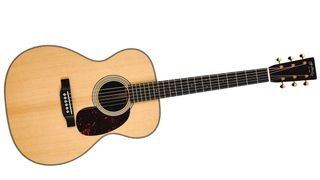 Martin 000-28E Modern Deluxe acoustic electric guitar
Martin 000-28E Modern Deluxe acoustic electric guitar
(Image credit: Martin)
3. Martin 000-28E Modern Deluxe
A Premium Option for the Discerning Professional Musician
Read our Expert Review of the Martin 000-28E Modern Deluxe
Specifications:
- Type: 000
- Top: Solid VTS Sitka spruce
- Back and Sides: Solid East Indian rosewood
- Neck: Select hardwood
- Scale: 24.9”
- Fingerboard: Ebony
- Frets: 20
- Electronics/Pickups: Fishman Aura VT Blend
- Finish: Natural gloss
- Case: Molded hardshell
Reasons to Buy:
- A superb modern update to a classic Martin model
- Enhanced volume and projection thanks to new construction features
- Features one of the best acoustic preamp systems available
Reasons to Avoid:
- Some traditionalists might find the “blingier” aesthetic less appealing
The Martin 000-28E Modern Deluxe elevates the already iconic 000-28 to new heights of sophistication and performance. While both the D-28 and 000-28 are benchmarks in the acoustic guitar world, the 000-28 stands out for its comfort and intimate feel, particularly appealing to professional players. This Modern Deluxe edition, released in 2020, represents a premium, contemporary reimagining of this classic instrument, making it the best acoustic electric guitar for pros.
The Deluxe model distinguishes itself with elegant appointments, including a pearl logo, vintage-style gold-plated open-back Waverly tuners, flamed maple binding, and durable gold alloy frets. It’s also engineered to be lighter yet louder than standard 000 models, incorporating a titanium truss rod for strength, carbon-fiber bridge plates, and Liquidmetal bridge pins. This “supercharged” 000 boasts a balanced tone with a robust bass response and remarkable touch sensitivity, essential qualities for professional recording and performance.
The top undergoes Martin’s Vintage Tone System (VTS) torrefication process, imparting a vintage character to the sound. The custom Fishman Aura VT Blend system combines sound images captured from miked examples of this model with the under-saddle pickup. This results in an amplified tone that offers both organic detail and the desired pickup attack for live mixing, solidifying its place as the best acoustic electric guitar for professional musicians.
Expert Verdict on the Martin 000-28E Modern Deluxe:
Paul Riario, Expert Reviewer
“Possessing a clear harmonic range, ultramodern features, and vintage-style appointments, the Martin 000-28 Modern Deluxe is by far one of the most responsive and satisfying acoustics available.” – Read Paul Riario’s full Martin 000-28E Modern Deluxe review.
Best Hybrid Acoustic Electric Guitar
 Fender American Acoustasonic Jazzmaster hybrid guitar
Fender American Acoustasonic Jazzmaster hybrid guitar
(Image credit: Fender)
4. Fender American Acoustasonic Jazzmaster
The Ultimate Fusion of Electric and Acoustic Guitar Versatility
Read our Expert Review of the Fender American Acoustasonic Jazzmaster
Specifications:
- Scale Length: 25.5”
- Top: Mahogany
- Back and Sides: Mahogany
- Fingerboard: Ebony
- Frets: 22
- Electronics: Fishman under-saddle transducer and bridge plate body sensor, Fender Acoustasonic Shawbucker
- Finish: Ocean Turquoise, Natural, Tobacco Sunburst, Tungsten (pictured), and Arctic White
- Bag Included: Yes
Reasons to Buy:
- Expansive palette of both acoustic and electric guitar tones
- Electric guitar-like playability
- Can be played acoustically unplugged
Reasons to Avoid:
- The Arctic White finish might be less appealing than other color options for some
Fender’s Acoustasonic series, starting with the Stratocaster and Telecaster models, reaches its pinnacle with the Jazzmaster. While it blurs the lines between acoustic and electric, leaning slightly towards the acoustic side in terms of overall sound, the Acoustasonic Jazzmaster redefines hybrid guitar design. It offers the comfortable playability of an electric guitar, but its soundhole allows for unplugged acoustic strumming, producing a parlor-like tone. However, plugging in unlocks its true potential.
The Acoustasonic Jazzmaster features a five-position switch, each offering A and B voices that can be blended. The “Acoustic Engine” utilizes three distinct pickup sources: a magnetic Shawbucker for a wide range of electric tones, an under-saddle transducer, and a body sensor to emulate various acoustic guitar sizes and styles. This innovative system results in an incredibly versatile stage guitar, capable of delivering both authentic acoustic sounds and a range of electric guitar voices, making it the best hybrid acoustic electric guitar for adventurous players.
Expert Verdict on the Fender American Acoustasonic Jazzmaster:
Dave Burrluck, Expert Reviewer
“The Acoustasonic is once more validated by the sheer breadth and quality of the acoustic sounds and electric voices on offer. This is a true hybrid acoustic-electric guitar that blurs the lines in the most musically inspiring ways.” – Read Dave Burrluck’s full Fender American Acoustasonic Jazzmaster review.
Best Budget Acoustic Electric Guitar
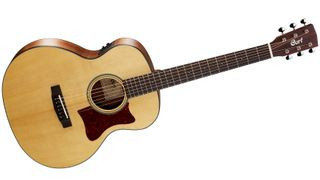 Cort Little CJ Walnut OP budget acoustic electric guitar
Cort Little CJ Walnut OP budget acoustic electric guitar
(Image credit: Cort)
5. Cort Little CJ Walnut OP
The Best Value Travel Acoustic Electric Guitar on the Market
Read our Expert Review of the Cort Little CJ Walnut OP
Specifications:
- Type: ¾-size jumbo
- Scale Length: 23.5”
- Top: Solid Sitka spruce
- Back and Sides: Laminate walnut
- Neck: Mahogany
- Fingerboard: Ovangkol
- Frets: 20
- Electronics: Fishman Presys II
- Finish: Open pore
- Bag Included: Yes
Reasons to Buy:
- Exceptional performance for its affordable price
- Fishman Presys II preamp includes EQ and a tuner
- Cort’s renowned build quality
Reasons to Avoid:
- No left-handed option available
Cort has earned a strong reputation for delivering exceptional value, and the Little CJ Walnut OP is a prime example. This acoustic electric guitar is incredibly playable and visually appealing, and it also excels when plugged in. For those seeking the best budget acoustic electric guitar, especially for travel, the Little CJ is a compelling option.
Currently priced under $450 in the US, it’s an attractive choice for musicians seeking a travel-friendly electro-acoustic. The mahogany neck with ovangkol fingerboard offers a fast feel with comfortable low action. While its smaller size means it won’t produce booming bass, it delivers a punchy midrange and bright, lively highs.
The Fishman Presys II preamp effectively amplifies its strengths, making the Little CJ sound larger than its size would suggest, especially with the onboard bass and treble EQ for tonal shaping. Cort’s consistent build quality ensures reliability, making this a top contender for the best budget acoustic electric guitar.
Expert Verdict on the Cort Little CJ Walnut OP:
Rob Laing, Expert Reviewer
“The Little CJ is one of the very best value travel acoustics on the market right now. There’s a lot of different players who would enjoy this; from younger starters, to electric players cautiously eyeing an acoustic purchase.” – Read Rob Laing’s full Cort Little CJ Walnut OP review.
Best Parlor Acoustic Electric Guitar
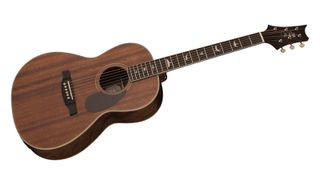 PRS Parlor SE P20E parlor acoustic electric guitar
PRS Parlor SE P20E parlor acoustic electric guitar
(Image credit: PRS)
6. PRS Parlor SE P20E
Fantastic Value in a Parlor Electro-Acoustic Model
Read our Expert Review of the PRS Parlor SE P20E
Specifications:
- Type: Parlor
- Top: Solid mahogany
- Back and Sides: Laminate mahogany
- Neck: Mahogany
- Scale: 24.72”
- Fingerboard: Ebony
- Frets: 20
- Electronics: Fishman GT-1
- Finish: Vintage Mahogany, Tobacco Sunburst, Black Top
- Case: No
Reasons to Buy:
- Consistent high SE build quality from PRS
- Excellent playability and punchy, focused tone
- A contemporary take on the classic parlor shape
Reasons to Avoid:
- The PRS headstock on a parlor guitar may divide opinions
PRS’s introduction of a parlor-size acoustic model in 2020 was a pleasant surprise, bringing a traditionally smaller body shape into their SE line. The Parlor SE P20E captures the vintage aesthetic of 1930s parlor guitars while showcasing PRS’s renowned build quality and design flair, making it the best parlor acoustic electric guitar in its class.
The understated satin finish and appealing finish options—Vintage Mahogany, Black Top, and Tobacco Sunburst—coupled with classic herringbone binding and ivory butterbean tuner buttons on the signature PRS headstock, create a refined look.
PRS SE guitars are known for their consistently high factory finish quality in the mid-range market, and the P20E upholds this reputation. The combination of classical and X bracing, bone nut and saddle, and Wide Fat neck profile contribute to enhanced projection from this compact and lightweight guitar. It’s ideal for blues, fingerstyle playing, and singer-songwriters. The Sonicore-based Fishman GT1 pickup system provides simple yet effective amplification features at this price point.
Expert Verdict on the PRS Parlor SE P20E:
Paul Riario, Expert Reviewer
“Boasting clean lines from top to bottom, comfortable playability, and a sweetly sonorous voice, the PRS SE Tonare P20E is one of the finest budget-minded parlor guitars.” – Read Paul Riario’s full PRS Parlor SE P20E review.
Best Dreadnought Acoustic Electric Guitar
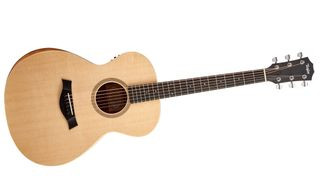 Taylor Academy Series 12e dreadnought acoustic electric guitar
Taylor Academy Series 12e dreadnought acoustic electric guitar
(Image credit: Taylor)
7. Taylor Academy Series 12e
The Most Playable Dreadnought Acoustic Electric Guitar for All Levels
Read our Expert Review of the Taylor Academy Series 12e
Specifications:
- Scale Length: 24.6”
- Top: Solid Sitka spruce
- Back and Sides: Layered sapele
- Neck: Hard rock maple
- Fingerboard: Ebony
- Frets: 20
- Electronics: Taylor ES-B
- Finish: Natural
- Bag Included: Yes
Reasons to Buy:
- Accessible playability for beginners and experienced players alike
- Comfortable, slightly more compact dimensions
- Taylor’s renowned build quality and sound
Reasons to Avoid:
- Lack of bass control on the ES-B preamp may be limiting for some
While positioned as an entry-level Taylor acoustic electric guitar, the Academy Series 12e surpasses many competitors in terms of playability, comfort, and overall performance. Although it’s priced higher than some beginner guitars, its exceptional qualities make it a worthwhile investment, suitable for players at all skill levels. For those seeking the best dreadnought acoustic electric guitar that prioritizes ease of playing, the 12e is an excellent choice.
Taylor designed the Academy Series with playability in mind, featuring a slim-profile neck, shorter scale length, low action, and a built-in armrest for enhanced comfort. We recommend the Grand Concert body (12e) over the 10e dreadnought in this series for its slightly more compact and comfortable feel. Taylor’s superb ES-B electronics ensure it’s ready for live performance, making it a versatile instrument that can grow with any guitarist.
Expert Verdict on the Taylor Academy Series 12e:
Chris Gill, Expert Reviewer
“The Taylor Academy Series guitars may have “plain Jane” appearance, but guitarists of all levels of experience will find it hard not to fall in love with their sexy sound quality, comfortable playability, and impressive electronics.” – Read Chris Gill’s full Taylor Academy Series 12e review.
Best 12-String Acoustic Electric Guitar
 Guild F-2512E Archback 12-string acoustic electric guitar
Guild F-2512E Archback 12-string acoustic electric guitar
(Image credit: Guild)
8. Guild F-2512E Archback 12-String
The Best Value 12-String Acoustic Electric Guitar Available
Read our Expert Review of the Guild F-2512E Archback 12-string
Specifications:
- Type: Jumbo
- Top: Solid Sitka spruce
- Back and Sides: Laminated maple
- Neck: Mahogany
- Scale: 25.5”
- Fingerboard: Pau ferro
- Frets: 20
- Electronics/Pickups: Guild/Fishman GT-1
- Finish: Natural
- Case: No
Reasons to Buy:
- An affordable entry point into the world of 12-string guitars
- Jumbo body shape maximizes the rich sound of 12 strings
- Bone nut and saddle enhance sustain
Reasons to Avoid:
- Limited EQ options on the preamp
Guild boasts a rich heritage in crafting exceptional 12-string jumbo acoustics, dating back to the 1960s. The F-2512E combines this legacy with modern manufacturing techniques to create the best value 12-string acoustic electric guitar. While a 12-string isn’t an everyday instrument for most guitarists, its unique, lush sound is unparalleled. The F-2512E offers this distinctive sound at a more accessible price point, making it an excellent choice for players looking to add a 12-string to their collection.
The arched back design enhances the projection of the shimmering, chorus-like tones characteristic of 12-string guitars. The inclusion of a bone nut and saddle, typically found on higher-end models, contributes to improved sustain, a welcome feature on an affordable instrument.
The electronics are straightforward, based on the Fishman Sonitone design, with volume and tone (treble rolloff) controls conveniently placed inside the soundhole. Despite its simplicity, the Guild/Fishman GT-1 system effectively amplifies the rich sound of this 12-string, making it stage-ready.
Best Preamp Acoustic Electric Guitar
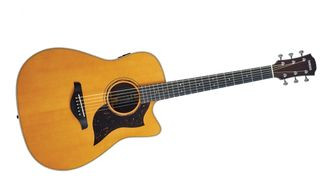 Yamaha A5R ARE acoustic electric guitar with best preamp
Yamaha A5R ARE acoustic electric guitar with best preamp
(Image credit: Yamaha)
9. Yamaha A5R ARE
Superior Preamp Performance for Enhanced Amplified Tone
Read our Expert Review of the Yamaha A5R ARE
Specifications:
- Type: Western body cutaway electro-acoustic
- Top: Solid Sitka spruce with A.R.E. treatment
- Back & Sides: Solid rosewood
- Neck: Mahogany
- Scale: 25.5″
- Fingerboard: Rosewood
- Frets: 20
- Tuners: Gotoh open gear
- Electronics: Yamaha SRT2
- Left-handed: No
- Finish: Vintage Natural
Reasons to Buy:
- Exceptional Yamaha Japan build quality and specifications
- Vintage-inspired aesthetics
- Excels in both unplugged acoustic and amplified electric tones
Reasons to Avoid:
- Lack of a non-cutaway body option
The Yamaha A5R ARE is a superb acoustic guitar in its own right, even before considering its electric capabilities. The ARE (Acoustic Resonance Enhancement) torrefied solid spruce top provides a vintage visual appeal and, combined with solid rosewood back and sides and scalloped bracing, delivers a classic, full-bodied dreadnought sound with added cutaway access. For players prioritizing amplified sound quality, the A5R ARE boasts the best preamp performance in its class.
The SRT2 system complements the guitar’s timeless acoustic qualities with a cutting-edge preamp. This system allows players to blend the under-bridge piezo pickup with the modeled sound characteristics of either a classic Neumann U 67 large-diaphragm condenser microphone or a Royer R-122 active ribbon microphone. This blending capability works exceptionally well, delivering amplified tones that are both articulate and organic, perfect for cutting through a mix while retaining natural acoustic character.
Best Jumbo Acoustic Electric Guitar
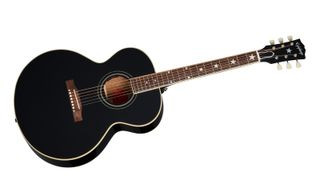 Epiphone Inspired By Gibson J-180 LS jumbo acoustic electric guitar
Epiphone Inspired By Gibson J-180 LS jumbo acoustic electric guitar
(Image credit: Epiphone)
10. Epiphone Inspired By Gibson J-180 LS
Fully Spec’d Jumbo with Solid Woods and a Premium Pickup System
Read our Expert Review of the Epiphone Inspired By Gibson J-180 LS
Specifications:
- Type: Jumbo
- Top: Thermally aged solid spruce
- Back and Sides: Solid mahogany
- Neck: Mahogany
- Fingerboard: Laurel
- Scale: 25.5”
- Frets: 20
- Electronics: LR Baggs VTC
- Left-handed?: No
- Finish: Ebony, Pink, Frost Blue
- Case?: Yes
Reasons to Buy:
- Top-tier LR Baggs VTC pickup system
- Excellent acoustic tone and projection
- Gibson-style headstock adds a touch of classic aesthetics
Reasons to Avoid:
- Higher price point for an Epiphone-branded instrument
The Epiphone Inspired By Gibson J-180 LS is a recent addition that draws inspiration from Gibson’s Custom Shop models, showcasing a wealth of premium features. For players seeking the best jumbo acoustic electric guitar, this model offers exceptional value and performance.
It features a thermally aged solid spruce top, which gives the guitar a played-in, resonant quality right out of the box, producing rich and open tones with abundant overtones. This is paired with solid mahogany back and sides, contributing to a lush, full low end.
The body shape is a slightly smaller jumbo design, offering excellent projection and a balanced sound profile while remaining comfortable for a wide range of players. The Epiphone J-180 LS is equipped with a high-quality LR Baggs VTC under-saddle pickup and preamp system. This system ensures that the amplified tone is big, full, and natural, minimizing the “piezo quack” often associated with under-saddle pickups.
FAQs About Acoustic Electric Guitars
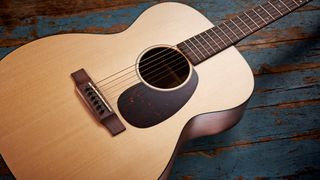 Martin 000 acoustic guitar on wooden background
Martin 000 acoustic guitar on wooden background
(Image credit: Future)
Why Do I Need an Acoustic Electric Guitar?
An acoustic electric guitar is virtually indispensable for any musician planning to perform live in venues larger than a small room. While large-bodied acoustic guitars can produce impressive volume naturally, their sound can easily get lost in a mix, especially alongside other instruments or in larger spaces. The ability to amplify your acoustic guitar through a speaker system is crucial for achieving adequate volume and projection in these situations.
The alternative to using an acoustic electric guitar—relying on a standard acoustic guitar and an external microphone—is less practical, particularly in live settings. While miking an acoustic can yield excellent sound quality, it introduces several potential challenges. These include microphone placement difficulties, unwanted noise pickup from other instruments or the audience, and increased susceptibility to feedback. An acoustic electric guitar offers a far more streamlined and reliable solution for amplified acoustic performance.
What Are the Different Types of Acoustic Guitar Pickups?
A variety of pickup types are used in acoustic electric guitars, each with its own sonic characteristics and installation methods. The most common type is the undersaddle piezo pickup. This pickup consists of a thin strip positioned beneath the guitar’s saddle. When the strings vibrate, the pressure on the saddle is transferred to the piezo strip, which converts these vibrations into an electrical signal. This signal is then sent to a preamp for amplification and tone shaping.
Piezo pickups generally share a similar sonic profile, characterized by a bright, direct sound with a degree of inherent compression. The specific acoustic properties of the guitar itself—wood choices, body shape, and construction—still influence the amplified sound, as they determine how the strings initially vibrate. The EQ controls on the preamp and amplifier are crucial for tailoring the piezo’s sound to your preference and the performance environment.
Transducer pickups, also vibration-sensitive, function similarly to piezo pickups but can be mounted in various locations on the guitar. Common placements include under the bridge plate or directly on the guitar’s body. These pickups aim to capture a broader range of vibrations from the guitar’s top and body, often resulting in a warmer, more natural amplified tone compared to undersaddle piezos.
Some of the best acoustic electric guitars incorporate a mic blend system. As the name suggests, these systems combine a microphone with another pickup type, often a piezo or transducer. A small microphone, typically condenser or electret, is positioned inside the guitar body to capture the instrument’s natural acoustic nuances and airiness. While a microphone alone might not provide a strong enough signal for stage use, blending it with a piezo or transducer allows you to capture both the detailed, organic tones of the microphone and the stronger signal and feedback resistance of the secondary pickup. This combination aims to deliver the best of both worlds: the natural sound of a microphone with the practicality of a pickup system.
What Do I Need to Know About Preamps?
An acoustic-electric preamp is an essential component that boosts the signal from your pickup. Acoustic electric pickups, especially piezo types, typically produce very low-level signals. These signals need to be amplified to “line level” before they can be effectively used with an amplifier, PA system, or recording console. Without a preamp, you would need to apply excessive gain at the amplifier stage, which would introduce unwanted noise and significantly increase the risk of feedback. Acoustic-electric preamps usually require a 9V battery to operate, so it’s always wise to carry spares, especially for live performances.
Acoustic electric guitar preamps often include an EQ section, allowing you to shape your amplified tone. EQ controls are invaluable for balancing the sound and reducing resonant frequencies that can cause feedback issues. Some preamp systems also feature notch filters, which are designed to specifically target and attenuate frequencies prone to feedback.
Many preamps also incorporate a tuner, a highly convenient feature for live performance. Some advanced preamps even include built-in effects such as chorus and reverb. However, for more extensive control over effects, external effects pedals generally offer greater flexibility and a wider range of options.
What’s the Difference Between Solid and Laminate Woods?
The terms “solid” and “laminate” in the context of acoustic guitars refer to the construction of the instrument’s body woods, and this distinction applies equally to acoustic electric guitars. Solid wood guitars are generally more expensive because they are more labor-intensive to construct and require higher-grade materials. These higher costs are reflected in the final price for consumers.
Solid wood guitars are crafted from single, solid pieces of wood for the top, back, and sides. Solid woods are believed to possess superior resonant qualities compared to laminates, contributing to a richer, more complex, and louder acoustic tone. Laminate wood guitars, on the other hand, are constructed from composite materials made of multiple thin layers of wood glued together. This manufacturing process is less costly than using solid woods, resulting in more affordable instruments. However, laminate construction typically yields a less resonant instrument compared to solid wood.
One advantage of laminate acoustic electric guitars is their increased resistance to changes in humidity and temperature. Laminate woods are less prone to warping or cracking due to environmental fluctuations, making them a more robust choice for musicians who tour frequently or live in climates with significant humidity variations.
It is common to find acoustic electric guitars that utilize a combination of solid and laminate woods, typically featuring a solid top with laminate back and sides. This hybrid construction approach aims to balance cost and tonal quality, providing some of the tonal benefits and aesthetic appeal of a solid top while keeping the overall price more accessible.
When selecting an acoustic electric guitar, it’s important to consider that you will likely play it unplugged at times. Therefore, its inherent acoustic tone is just as crucial as its amplified sound. The guitar’s construction, particularly the choice between solid and laminate woods, significantly influences its natural acoustic voice and should be a key factor in your decision.
Why Trust GuitarPlayers.net?
 Man playing Taylor acoustic guitar – demonstrating trust in Guitar World
Man playing Taylor acoustic guitar – demonstrating trust in Guitar World
(Image credit: Future)
☑️ A Global Audience of Guitarists: 3.8 Million Monthly
☑️ Extensive Gear Reviews: 1,200+ on GuitarWorld.com
☑️ Decades of Product Testing: 30+ Years at Guitar World
GuitarPlayers.net builds upon over 44 years of expertise from Guitar World, a leading authority in the guitar world. We are committed to providing guitarists with the most reliable and comprehensive information available. Our website features expertly curated gear guides and in-depth, authoritative reviews written by a team of highly experienced industry professionals.
Guitar World’s legacy began in print in July 1980, and since then, it has been a trusted source for engaging lessons, insightful interviews with legendary guitarists, and invaluable buying advice for musicians of all levels.
GuitarPlayers.net extends this legacy online, serving as a central hub for leading guitar expertise. We feature content not only from Guitar World but also from respected publications such as Guitarist, Total Guitar, Guitar Techniques, and Bass Player. Reaching over 3.8 million guitarists every month, GuitarPlayers.net is the premier destination for guitar enthusiasts worldwide.
Learn more about the expert authors behind this guide:
Rob Laing
Rob Laing is the Reviews Editor for GuitarPlayers.net and MusicRadar guitars. He dedicates his time to exploring and evaluating the latest guitar gear, ensuring our reviews are thorough, honest, and informative. With nearly 20 years of experience as a writer and editor for guitar magazines and websites, Rob brings a wealth of knowledge to his reviews.
Richard Blenkinsop
Richard Blenkinsop is a freelance writer for GuitarPlayers.net, MusicRadar, Guitar Player, and Reverb. His decade of experience in music retail informs his specializations in electric and acoustic guitars, bass guitars, and related musical equipment. Beyond reviewing gear, Richard assists musicians with songwriting, production, and performance and plays bass in an alt-rock band.
Daryl Robertson
Daryl Robertson is GuitarPlayers.net’s Senior Deals Writer. He is responsible for creating and maintaining over 200 buyer’s guides, identifying the best deals on guitar products, and rigorously testing new gear. Daryl’s reviews have appeared in Total Guitar, Future Music magazine, and MusicRadar.com. He has interviewed numerous musical icons and draws on his decade of experience in music retail to advise guitarists on the best gear for their needs.
Connor Godfrey
Connor Godfrey contributes to GuitarPlayers.net and MusicRadar. A guitarist since age 10, he has played in bands and has a background in audio engineering, with experience in renowned studios like Rockfield and Invada. Connor is passionate about recording guitar and is always seeking out the best gear for capturing exceptional tone, from microphones to audio interfaces and cabinet simulators.
How We Test Acoustic Electric Guitars
 Two Martin acoustic guitars being tested side by side
Two Martin acoustic guitars being tested side by side
(Image credit: Future)
At guitarplayers.net, we are experts in the field of guitar gear, with decades of combined experience in playing and product testing. We are deeply passionate about all things guitar-related, and this passion drives our rigorous testing and evaluation process. We leverage our extensive knowledge and hands-on experience using guitars in live performance, recording sessions, and rehearsal settings to select the best products for our guides.
When determining the best acoustic electric guitars, we combine our own hands-on testing with user reviews and engage in detailed discussions with our editorial team. We strive to reach a consensus on the top products in each category, ensuring our recommendations are well-rounded and reflect the needs of a wide range of guitarists.
As guitar players ourselves, our primary goal is to help other guitarists find the perfect instrument for their individual needs and preferences. We carefully consider factors ranging from budget and features to ease of use and long-term durability. This comprehensive approach allows us to confidently present lists of what we believe are truly the best acoustic electric guitars available today.
Learn more about our comprehensive methodology for making recommendations and how we rigorously test each product featured in our buyer’s guides.

